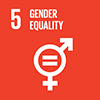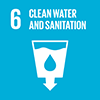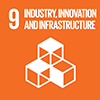Description/achievement of initiative
A critical issue of worldwide concern is antibiotic resistance creating threats to global health, food security, and development and Carbon gas is predicted to produce global warming and droughts. This project combats the need for non-therapeutic antibiotics in livestock production while maintaining growth, reducing resources and reducing carbon emissions of ruminant livestock. In order to achieve global food security and improve quality/functionality under changing global climate, the goals in this 4-year project target the education of livestock management, an R&D project on better ruminant nutrition and trials documenting the reduction in carbon emissions through better nutrition.
Implementation methodologies
This project will be broken down into several phases: Phase 1 – Begin the education process. ProAgni has developed content on antibiotic resistance and the responsible use of antibiotics in animal production. They will present approximately six presentations at industry and academic events within the next 12 months. The education process will continue throughout the project with the overall aim of 15 events over 5 years. Phase 2 - Improve Ruminant Livestock Digestion to reduce Carbon Emissions, reduce by developing an additional nutritional supplement. ProAgni is in the process of developing a new nutritional supplement that is focused on significantly reducing induction times in intensive feeding systems using shelf stable probiotics. This will improve and support ruminant nutrition creating better overall nutrition absorption for ruminant species. After development is completed, the product will be trialled and tested on ruminant and non-ruminant livestock. Phase 3 – Test the methane produced by cattle on the current grain diet to create a baseline. Test cattle on antibiotic free ration and measure differences in emissions. After completion on new nutritional supplement, another round of testing will commence documenting improvements in methane levels produced. Phase 4 - Trial – Run and ongoing test at a farm/feedlot site to determine the amount of antibiotics in the soil and water supply prior to switching to feed containing no antibiotics. Measure through 5 generations of cattle and track changes in antibiotic levels in soil and water in the surrounding area.
Arrangements for Capacity-Building and Technology Transfer
Provide useful data and evidence to support the removal of antibiotics from livestock production and the following SDGs [Goal 2] By promoting agriculture and agricultural technology that reduces the resources needed for ruminant livestock, removes the need for non-therapeutic antibiotics and reduces carbon emissions produced, this project helps create sustainable, resilient agriculture, producing more food and supporting family farmers. [Goal 3] Systemic antibiotic use is contributing to antimicrobial resistance. A large portion of antibiotics fed to animals are used to promote growth or to control acidosis. Reducing the non-therapeutic use of antibiotics, this project supports better health world-wide by helping to ensure antibiotics still work and are not excreted into the soil and water supplies. [Goal 5] We support family owned farms, many of which are female run.[Goal 6] By reducing the production time of ruminant livestock, we reduce the amount of water needed to raise livestock. By removing antibiotics from the food chain, the risk of contaminants flowing into wetlands and rivers is reduced or removed.[Goal 8] Per the Global Agenda for Sustainable Livestock LAMP Responsible use of antibiotics promotes economic growth by supporting healthy and productive animals.[Goal 12] This project promotes sustainable use of resources by decreasing the amount of water needed to produce ruminant livestock and reducing losses in production by supporting livestock through the dramatic changes to nutritional demands that occur directly prior to the birthing process. Preparation for these changes is critical for offspring survival, immunity and vigour. By increasing immunity in offspring through better colostrum volumes and quality, we decrease nutritional stress, increase survivability of offspring.[Goal 13] Greenhouse gas emissions from ruminants are largely a by-product of inefficient feed conversion. Dietary manipulation is the most effective and convenient way to reduce methane emissions and increase nitrogen utilization efficiency. ProAgni reduces emissions by making feed conversion more efficient, and replacing empty calories, with nutrient dense supplementation. Measuring emissions per kilogram of meat produced, ProAgni are reducing emissions by nearly 50% when compared to cattle on other non-medicated feeds. [Goal 15] This project supports responsible use of resources, especially land and water by increasing feed efficiency, better utilisation of resources and removal of potential harmful additives from livestock excretions. With better feed efficiency, less land is required, current land can be better utilized, and antibiotics are removed from the feed decreasing potential contaminants in the soil, water and potential degradation of land.
Coordination mechanisms/governance structure
The initiative will be implemented using a project management approach. The high level of management will be a project management team with leadership of a project manager from ProAgni Pty Ltd. The project will form appropriate committees to manage its activities as a means for internal controls. The initiative will use a matrix approach and a bottom up approach with regards to monitoring and reporting.
Partner(s)
ProAgni Pty Ltd., AMBOS, CSIRO, University of New South Wales
Progress reports
Goal 2
2.3 - By 2030, double the agricultural productivity and incomes of small-scale food producers, in particular women, indigenous peoples, family farmers, pastoralists and fishers, including through secure and equal access to land, other productive resources and inputs, knowledge, financial services, markets and opportunities for value addition and non-farm employment
2.4 - By 2030, ensure sustainable food production systems and implement resilient agricultural practices that increase productivity and production, that help maintain ecosystems, that strengthen capacity for adaptation to climate change, extreme weather, drought, flooding and other disasters and that progressively improve land and soil quality
Goal 3
3.3 - By 2030, end the epidemics of AIDS, tuberculosis, malaria and neglected tropical diseases and combat hepatitis, water-borne diseases and other communicable diseases
3.4 - By 2030, reduce by one third premature mortality from non-communicable diseases through prevention and treatment and promote mental health and well-being
3.9 - By 2030, substantially reduce the number of deaths and illnesses from hazardous chemicals and air, water and soil pollution and contamination
Goal 5
5.5 - Ensure women’s full and effective participation and equal opportunities for leadership at all levels of decision-making in political, economic and public life
5.a - Undertake reforms to give women equal rights to economic resources, as well as access to ownership and control over land and other forms of property, financial services, inheritance and natural resources, in accordance with national laws
5.b - Enhance the use of enabling technology, in particular information and communications technology, to promote the empowerment of women
Goal 6
6.3 - By 2030, improve water quality by reducing pollution, eliminating dumping and minimizing release of hazardous chemicals and materials, halving the proportion of untreated wastewater and substantially increasing recycling and safe reuse globally
6.4 - By 2030, substantially increase water-use efficiency across all sectors and ensure sustainable withdrawals and supply of freshwater to address water scarcity and substantially reduce the number of people suffering from water scarcity
6.6 - By 2020, protect and restore water-related ecosystems, including mountains, forests, wetlands, rivers, aquifers and lakes
Goal 12
12.2 - By 2030, achieve the sustainable management and efficient use of natural resources
12.3 - By 2030, halve per capita global food waste at the retail and consumer levels and reduce food losses along production and supply chains, including post-harvest losses
12.4 - By 2020, achieve the environmentally sound management of chemicals and all wastes throughout their life cycle, in accordance with agreed international frameworks, and significantly reduce their release to air, water and soil in order to minimize their adverse impacts on human health and the environment
12.8 - By 2030, ensure that people everywhere have the relevant information and awareness for sustainable development and lifestyles in harmony with nature
Goal 13
13.3 - Improve education, awareness-raising and human and institutional capacity on climate change mitigation, adaptation, impact reduction and early warning
Goal 15
15.1 - By 2020, ensure the conservation, restoration and sustainable use of terrestrial and inland freshwater ecosystems and their services, in particular forests, wetlands, mountains and drylands, in line with obligations under international agreements
15.3 - By 2030, combat desertification, restore degraded land and soil, including land affected by desertification, drought and floods, and strive to achieve a land degradation-neutral world

Dec 2021
Improve Ruminant Livestock Digestion to reduce methane emissions, through the use of nutritional supplements, and continue to promote the removal of antibiotics from animal feed.

Dec 2022
Trial – University trials have shown that antibiotics increase methane emissions from microbiota in cattle dung, and that antibiotics fed to livestock effect how plants allocate carbon and take up nitrogen from the soil. ProAgni will collaborate with research institutions to observe differences in soil carbon efficiency with ruminants fed a typical antibiotic feed and one using antibiotic and ionophore free feed. Once results are available, ProAgni will work to identify options for emission reduction programs using feed products that lower carbon emissions.

Jul 2020
Raise Awareness of the issue of Antimicrobial Resistance through educating Farmers about antibiotic use in livestock feed during a series of six industry and academic events Month / year: Wollongong – Jul 2019 TechSpo - Aug 2019. Global Table – Sep 2019 ALFA SmartBeef – Oct 2019 World Antibiotic Awareness Week Campaign - Nov 2019. TFI Feedlot Initiative – Jan 2020. LamEx 2020 – Jul 2020

Mar 2020
Fund a PHD Canidate through the University of New South Wales in conjunction with the CSIRO to continue the testing of a new probiotic delivery system (4 yr project)











 Dec 2021
Dec 2021
 Dec 2022
Dec 2022
 Jul 2020
Jul 2020
 Mar 2020
Mar 2020
 Time-frame: Jan 2019 - Dec 2022
Time-frame: Jan 2019 - Dec 2022